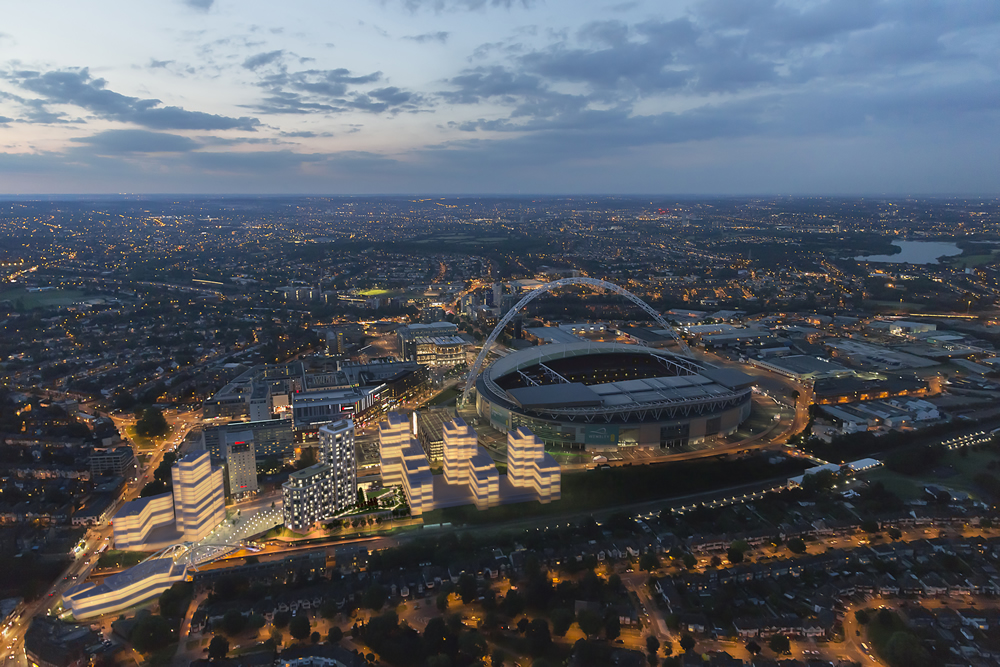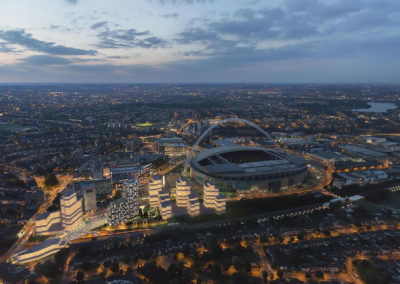The South West Lands project is a 900 unit residential led mixed use development at the 85-acre Wembley Park site. The project comprises 4 blocks of height varying up to 20 storeys over a single storey retail level, basement carpark and court yard space. The project is a mixed use, multi tenanted project which fulfils a mixture of tenure types. It is part of the residential led regeneration of Wembley. The scheme offers extensive residential landscaped amenity areas to the south. An amenity building is also included between the two largest towers for use by the private residents.
The design of the apartments was heavily influenced by the Life Time Homes’ requirements, the provision for the district heating system and the site-wide waste management system, Envac. These criteria were overlaid by the Architect, John Thompson and Partners, onto the prime objective, maximizing net area for each apartment.
The structural frame solution adopted by CRE8 Structures was a 225mm thick flat slab with blade columns hidden within the demise walls. This helped to maximise the net internal area of the apartments and to minimise the storey height which was important given the overall planning height restriction. Rigorous finite element analysis of the flat slabs resulted in an efficient design which minimised the tonnage of rebar required.
Network Rail Form 1 consent was needed as the buildings approached the boundary with the operational railway and there are covenants that covered the site requiring Network Rail consent to discharge. CRE8 structures led the technical negotiations and obtained consent from Network Rail for the proposed development and the construction along the railway boundary.
Brent Council highways consent was required for the tie in points of the estate roads to the highways. CRE8 Structures led the technical discussions and produced the details signed off by Brent’s engineers.
The project also required close liaison with neighbouring stakeholders Wembley Stadium and Chiltern Railways on crowd control safety issues and the interface with construction.
There was a stringent requirement to review the methods for constructing the blocks to meet the crowd control provisions required by Wembley Stadium and Chiltern Railways on event days. This had a major impact on construction logistics, limiting the space available for deliveries on site, therefore, alternative approaches to logistics had to be developed. To help address this, we limited the size of elements specified for construction, and worked with the project manager and contractor to allow a ‘just in time delivery’ of these elements to site. Within the dictated size constraints, off-site construction and prefabrication was maximised where possible.
















